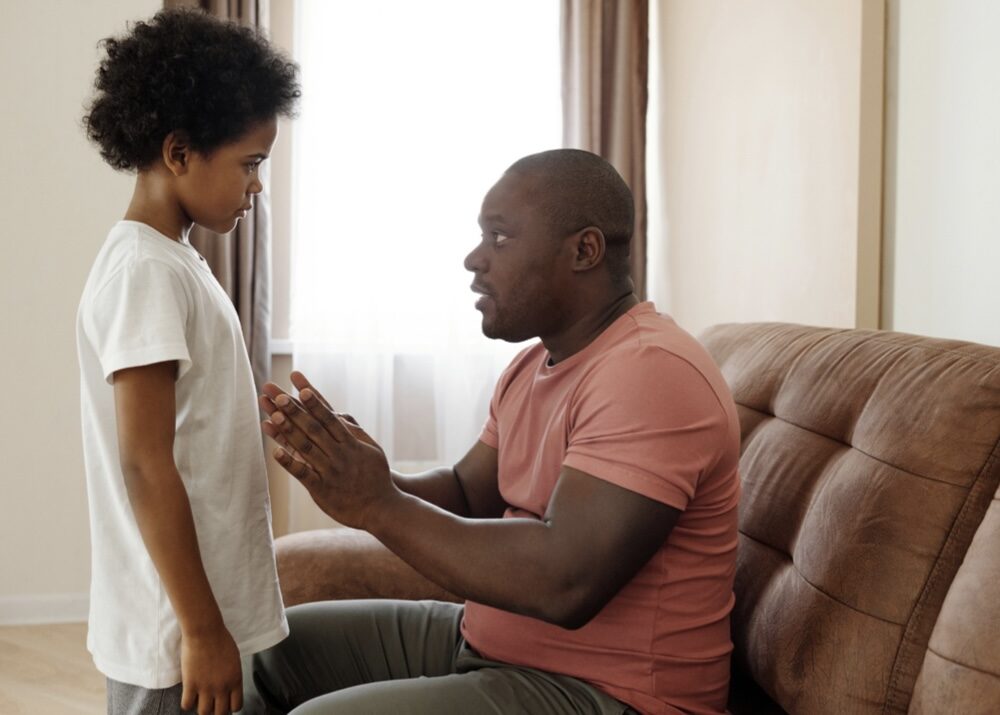
Has anyone ever wished that parenting could have a detailed manual, a bit like the old Encyclopedias that our parents or grandparents had? Go to Chapter 3, Section 3.2 for a detailed guide on how to calm down a child who tantrums before bedtime! That would make life so much easier – a pinch of this and a dash of that and voila your child is calm and happy and ready to have you tuck them in bed. Communication with our children, whether verbal or non-verbal, can be a slippery slope especially if we have children who are neuro-diverse, highly sensitive, have a learning disability, or don’t seem to listen regardless of the situation.
In Chapter 1 of The Whole Brain-Child Workbook by Dr. Daniel Siegel and Tina Payne Bryson, these authors state that almost all parents have two goals: 1) To survive the challenging experiences with their children, and 2) To help their children thrive and to give them experiences that they will integrate into their growth and development. In the competitive Western culture that we live in, oftentimes these experiences are interpreted as sports classes, music classes, additional academic coaching or tutoring and such. While there is much value in these additional services for those who have the financial flexibility to provide them, what gets lost in translation is our intimate and direct relationship with our children and how deeply children crave time and togetherness with their parents or caregivers.
The meaningful times that parents and children share together will lay the foundation for what Jean Piaget referred to as Object Permanence in his seminal theory of cognitive development. Object permanence describes a child’s ability to know that objects continue to exist even though they can no longer be seen or heard. It’s like our inner compass. The “object” that is internalized is usually the parent/caregiver and how they interacted and communicated with us and how we felt about that interaction and communication. It lays the foundation for the child’s ability to self-regulate.

So, what do we do when our child seems to not be able to self-regulate and calm himself/herself down not just at younger ages but as they grow and mature?
As parents and caregivers it is then incumbent upon us to become their co-regulators. What does that mean? It means to be aware of how our child’s behavior is affecting us and how we are responding to it. Does our own anxiety shoot up? Do we resort to yelling? Do we just tune out? Do we get into setting consequences and punishment right away as a way to deter behavior? If you have answered yes to any or all of the above then you are not alone – that is what we do when we are trying to survive the moment.
There is a powerful alternative, however. To use Dr. Siegel’s words “instead of command and demand, try connect and re-direct”. When we connect (getting down to their level if they are younger, having gentle eye contact, holding their hand or inviting them to sit down with us and touching them) we are acting as co-regulators. Once a loving connection has been established, it is essential to validate and reflect what the child is feeling (You are mad that you have to stop playing and come to the dinner table). Then you re-direct (it’s a special time to have dinner together. How about after dinner, you get — minutes of playtime and then we get ready for bed?). This may appear deceivingly simple but it is a powerful approach. Of course, sometimes despite our best attempts we may not be able to act as co-regulators; that is understandable and you should not blame yourself. Keep trying. Just remember that you don’t have to be the perfect parent, just a “good enough” parent.

References:
- Siegel, Daniel J. M.D., Bryson, Tina Payne Ph.D. (2015). The Whole Brain Child Workbook: Practical Exercises, Worksheets, and Activities to Nurture Developing Minds. Pesi Publishing & Media
- Piaget, Jean (1977). Gruber, Howard E.; Vonèche, J. Jacques. (eds.). The essential Piaget. London: Routledge and K. Paul. ISBN 978-0710087782. OCLC 3813049
- Winnicott, Donald (1953). “Good Enough Mother”
About the Author: Kathy Precht, LCSW has over 20 years of experience working with children and adolescents ages 4-17 years old in different roles that she has held over the years in agencies and school settings. She has experience working with clients from diverse cultural and socioeconomic backgrounds and brings a culturally sensitive and inclusive lens to her therapy practice. Kathy is also trained in play therapy and working towards her Registered Play Therapy certification.


